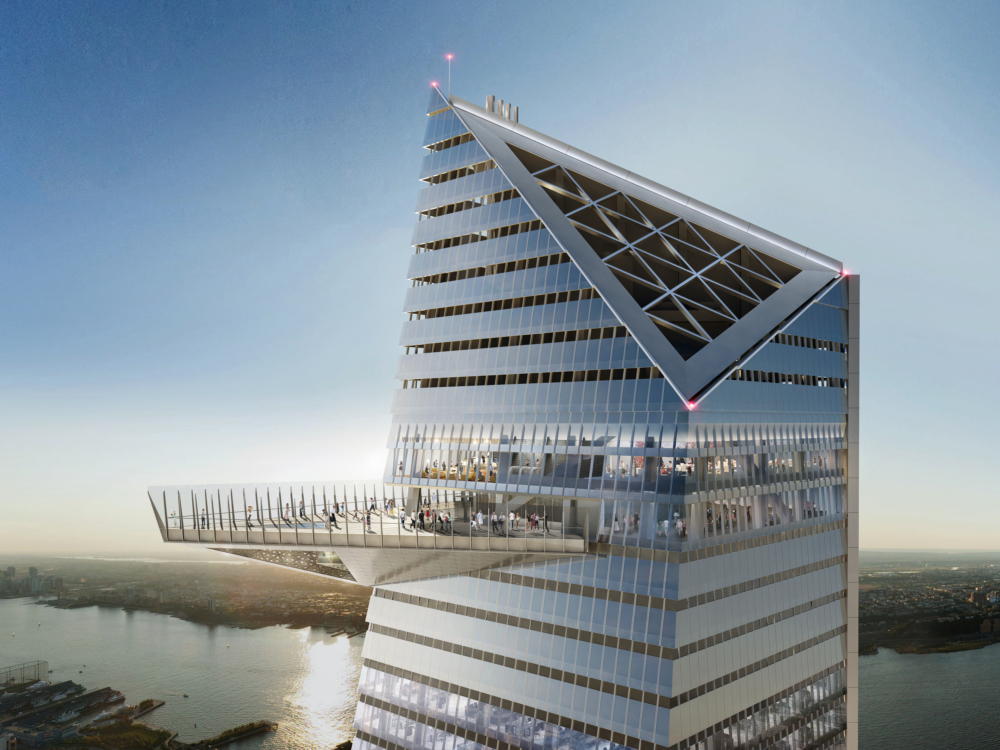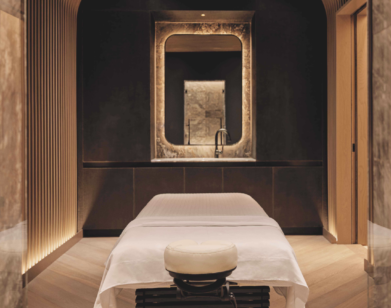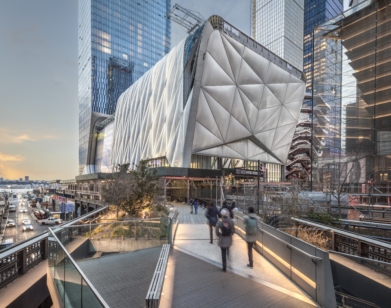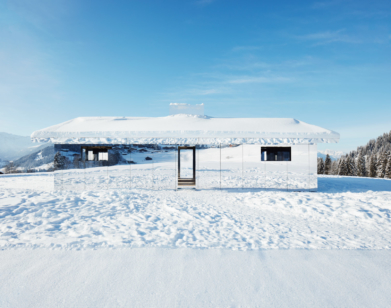Meet New York’s Newest Neighborhood, Hudson Yards

From the observation deck at Hudson Yards, you can observe city lifeforms from above. Courtesy of Related Companies.
On the 24th floor of 10 Hudson Yards, there is a place called the Experience Center. At its entrance, there is a large and very expensive-looking scale model of the lower western portion of Manhattan. Resting on a table surrounded by LED screens, and sliced off from the rest of the island, the miniaturized neighborhoods of TriBeCa, Greenwich Village, Chelsea, and the heretofore ambiguous areas above it, look like a marbled rib-eye steak. It’s here where you can meet New York’s newest neighborhood.
On a beautiful afternoon this past week, my friend Peter and I stood in front of this model with Related Companies’s Senior Vice President of Sales, Sherry Tobak. I eyeballed her Cartier wristwatch as she extended a finger to press a steel button labeled “CULTURE” that ignited the model with fizzling white light. A pool of fairy dust sparkled in front of us, starting at the relatively new Whitney Museum (“proof that New York’s cultural heart is now downtown”) and crawling its way north up the High Line past Chelsea’s “over 300 art galleries,” and directly into Hudson Yards. The new real estate development — the largest in New York’s history — will even have its own new little piece of the High Line, a curled extension called “The Spur.”
For someone like myself, who is completely uninformed on what Hudson Yards actually will be, Sherry and her next model — an even larger and more detailed huddle of skyscrapers — have all the answers. In its final form, the Hudson Yards real estate development will consist of two massive plates that cover an entire neighborhood-sized plot of land that once housed trains for the Long Island Railroad. Divided by west and east, the first plate closer to the river is set to begin construction in “five to seven years.” The other plate to the east has been completed, built upon, and is now very much coming to life. 10 Hudson Yards, the very building in which Peter, Sherry, and I found ourselves in, is the only building in the development that is not built on a plate, and, therefore, it is the first to be in operational use. The corporate office tower already houses offices for Boston Consulting Group, L’Oreal, Coach, SAP, and a handful of other blue chip companies. On March 15 , it will host the ribbon-cutting of a mall that will include, amongst other treasures, New York City’s first Neiman Marcus.
Below 10 Hudson Yards is The Shed, an arts venue with a retractable, foreskin-like sheath designed by Diller, Scofidio, and Renfro. Upon its opening, the space will become “the biggest cultural institution in New York after Lincoln Center.” Three more commercial towers are slated to open on the eastern plate sometime within the next couple of years. One of these seems rather unremarkable. Another will be the second largest building in New York and boast the “Western world’s highest observation deck.” The third tower just broke ground after a commitment from the private equity behemoth Black Rock. Diagonally across from us is yet another tower that will contain the world headquarters of Equinox (also a Related Companies holding), the largest Equinox gym ever to be bestowed to mankind, as well as the first Equinox hotel. One of these buildings — I forget which by now — will even house the Hospital for Special Surgery, an amenity that will fulfill the existential component of Hudson Yards’s “Live-Work-Play” lifestyle concept. Looming above The Shed, directly across from us, is 15 Hudson Yards, a luxury condominium tower also set to open this year. (It’s the first luxury condominium project for Diller, Scofidio, and Renfro and likely the result of some kind of Faustian bargain.) “We’ve sold about 60 percent of the apartments before even opening,” Sherry noted proudly, as we all stare at 15 Hudson Yards through an observation window at the end of the tour. Listening to her talk about Hudson Yards is like watching Glenn Gould play the piano.
The most intriguing — and perhaps bizarre — feature of Hudson Yards is something called New York’s Staircase, a bronze-colored structure by Thomas Heatherwick that sits in the middle of the eastern plate like a massive, glinting hamper. On the inside, New York’s Staircase provides an M.C. Escher-like public square for three-dimensional Sunday strolls. It is replete with dozens of observation decks laced together by spectral stairwells leading to nowhere. I scratched and clawed for metaphors — a massive ceremonial vase named after New York in the center of the city’s largest real estate development — until Sherry cut in with something even better. “The New York Staircase is Thomas Heatherwick’s answer to a question posed by our chairman, Steve Ross.” She paused to articulate the gravity of Mr. Ross’s proposition. “’How do you create a version of the tree at Rockefeller Center that is capable of bringing people together 365 days of the year?’”
In New York’s newest neighborhood, every day will be Christmas.






